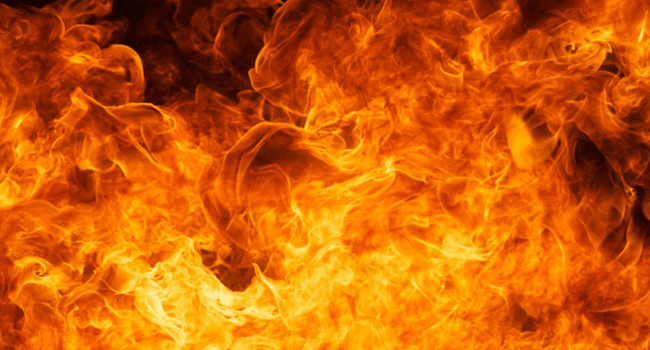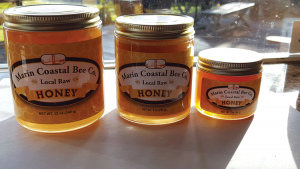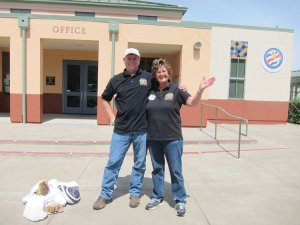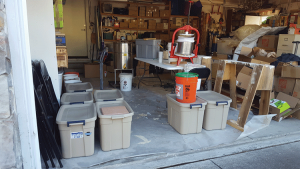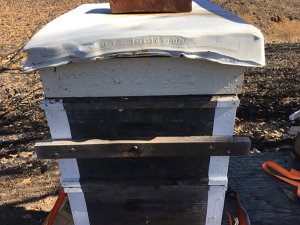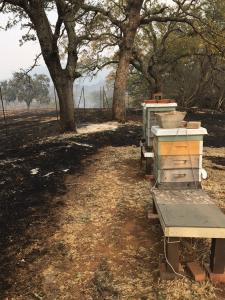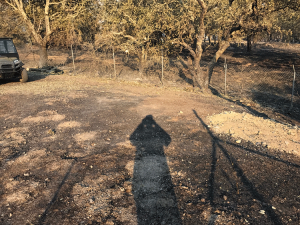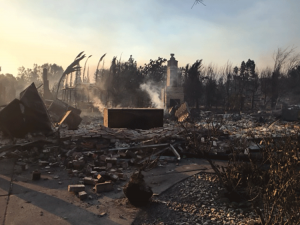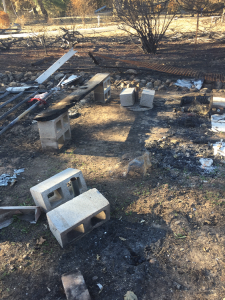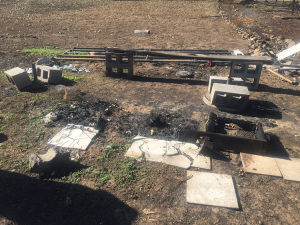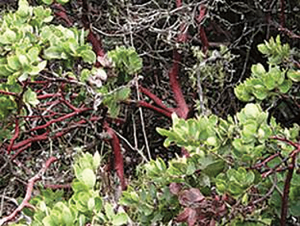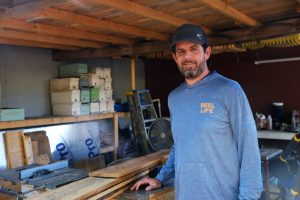By: M.E.A. McNeil
What Californians know about tornadoes is that they happen somewhere else. Ask anyone – not here, no way.
But tornadoes did come to California. They were made of fire. They blew, gyres of flame, unstoppable, igniting wildfires that raged uncontained for nearly two weeks.
Although a dozen big fires burned simultaneously across Northern California, the Tubbs Fire in Santa Rosa, about 55 miles north of San Francisco, “was a very different kind of fire,” according to Ken Pimlott, the director of Cal Fire.
“Almost horizontal. It generated so much heat that it created its own circular patterns.” Those vortices of air rose into twisting columns – fire tornadoes. Their rare occurrence has never been so devastating. They left 22 people dead and 36,432 acres burned. They peeled off roofs, lifted and flipped trucks.
It started in the hills above Santa Rosa, about 55 miles north of San Francisco on Sunday night, October 8, 2017 at 9:43 pm.
Not far away, beekeeper Mike Turner went to bed around 11:00 that night. There was a faint odor of smoke in the air, not unusual from a barbeque in his neighborhood of family homes. The weather was still warm. Unusually warm. He checked and saw nothing before he went to sleep.
- Mike Turner’s Marin Coastal Bee Honey. His 2017 harvest was nearly all burned in the fire that demolished his Santa Rosa home. Photo credit: Mike Turner
- Beekeepers Mike Turner and Thea Vierling outside Austin Creek Elementary School where they teach about bees in an outreach program for the Sonoma Beekeepers’ Association. Turner lost his home, work space and equipment in the fire. Vierling is part of a taskforce organized to support beekeepers with loss. Photo courtesy of Thea Vierling
- Mike T garage: Beekeeper Mike Turner used a three-car garage to extract and bottle his honey. It was a complete loss, including the specialized tools he had made, such as bee vacs and a cell incubator.
At about 1:15 am, he drowsily took note that his clock was blinking. Ok, the power had gone out and come back on. He drifted off – a distant roaring sound could have come from the freeway half a mile away. The roar grew louder. A smell of smoke thickened the air. If he was not completely awake when he stepped onto his porch, he was jolted to see the sky glowing orange.
“Go now!” screamed his neighbor.
Turner is a gentle, well-liked guy in his early 50s. He and his wife Deborah run a beekeeping business. They have apiaries in adjacent counties, market their Marin Coastal Bee Honey, extract bees and yellow jackets, teach beekeeping, and manage about 100 colonies for clients.
It’s honey harvest season. Turner has been working in his rented three-car garage, skimming the wax cappings off of frames full of honey with a hot knife, one by one. It’s tedious, sticky work. He’s finished spinning the honey out of the frames in his stainless steel centrifuge, and, to get every last drop, he’s squeezed oddly shaped comb in a fruit press. That’s done. The honey is in buckets, each labeled by apiary location within Mill Valley, San Rafael, Russian River, Rincon Valley, Santa Rosa, Tiburon. His label says, “Know where your honey comes from,” and he’s specific. After all, it’s a taste of place if anything is. Now it’s ready to bottle, and orders are coming in.
As Turner and his wife slept that Sunday night, a high pressure system over the Central Valley of California was forcing air north into a low pressure system. The systems were bent on equalizing. The contrast between the two fronts was so great that air moved fast. Really fast, up to 80 mph – hurricane force.
- The fire came so close to this hive that it melted the plastic top and scorched the paint. The colony survived. It was one of the fortunate ones. Photo credit: Lizanne Pastore
- While 20 area beekeepers lost their bees, the fierce Tubbs Fire swept to within feet of these hives and stopped, miraculously sparing them. Photo Credit: Lizanne Pastore
- A beekeeper surveys what’s left after the fierce Northern California Tubbs Fire swept through the area with little notice. The squares of ash were once colonies of bees. Photo credit: Mike Turner
“Just like water flows from higher to lower elevation, winds flow down a pressure gradient as they go from high pressure to low pressure,” said Max Moritz, a wildfire specialist with the University of California Cooperative Extension. “When they get concentrated, like through a mountain pass, they will speed up, like a river going through a narrow channel.”
Overnight, gusting winds had funneled into a steep drainage ravine down Mark West Springs Road in Santa Rosa. What happened then is best described by a phenomenon called the Venturi effect. A science teacher might demonstrate it with a pressure hose nozzle in a paper towel tube: The compressed air pulls on the room air to equalize the pressure between the two, creating an intake, a vacuum. It might vacuum up sawdust. Or, on this night, vehicles.
“I could see flames going up at the end of the cul de sac,” said Turner, “And I heard explosions.” Pop, pop, boom, bang. “We saw bedlam. People were grabbing kids and pets and throwing them into cars.”
The power was cut. In the dark, he put on jeans, a tee shirt and flip flops as Deborah grabbed her wedding rings and her purse. They searched for their black cat in the blackness, and at last coaxed it with their other reluctant cat into one carrier. Turner locked his door, thinking that soon they’d be back. He’d had his hand on the thick notebook that kept his beekeeping records, hive by hive, but he left it; they’d be back. By 1:30 a.m. they had joined a growing number of cars pulled into an empty gas station on the other side of Highway 101, their passengers standing in stunned silence to watch the inferno rage down the hills. They didn’t wait until the fire jumped the six-lane freeway.
An hour later, at 2:30 am, Hector Alvarez woke to his phone ringing. “What fire?” he said.
He is a hard working commercial beekeeper, in his 40s. His grandfather kept bees in Mexico using hollowed logs plugged with adobe. His father kept bees in Mexico, too, but when he worked in California as a migrant laborer, he’d left behind some swarms in wood apple boxes in an orchard. When Alvarez came to this country, he found those same boxes still thriving with bees – full of wax comb built out willy nilly, without frames to guide them. He came across The Sonoma Beekeepers’ Club, and members welcomed him, helped him learn and nurture his business. One offered to transport some of his hives to a pollination customer to get him started. “I didn’t even know about doing that,” he said. Now he manages some 900 hives for honey and pollination. He has two farms and other yards where he keeps bees and a truck and trailer to move them.
That night, he stepped outside and saw orange in the sky, in the direction of his second farm, where all his equipment was kept.
“You can’t come,” his neighbor said. “They’ve blocked the road.”
Alvarez drove as far as he could. Vehicles were evacuating out, taking both of the two lanes, so he parked and walked. “At first I couldn’t see the fire,” he said. “It was dark. Then I saw the flames in the hills and heard explosions. It was like a big monster, a fireball from the top of the hill to the bottom spraying everything with fire, going down toward the farm.”
He spent the rest of the night defending his place. With his tractor, he tilled in a blackberry patch on the edge of the property. He put out flying sparks and embers. “By sunrise I was thinking the fire would come,” he said. All he could do was park his equipment by a still-green vineyard next door. “I couldn’t focus.” Suddenly, about 5 am on Monday morning in the dark before dawn, the wind switched direction to the south, away from the farm. The fire stopped not 400 yards from his fence, turning to ravage others.
Lizanne Pastore expects some wind, but not like it was and not so early in the season. She has two small apiaries at the 40 acre vineyard that she and her husband farm, Old Hill Ranch in Glen Ellen, south of Santa Rosa. Early that Monday morning of October 9 the wind kicked up so fiercely that she drove out to check some hives. She keeps rocks on the covers until her last hive inspection of the year, which would not be for weeks, the end of October. At that time, she straps each one down against the winds that normally come later in the year.
- This street, in the Kenwood area of Santa Rosa, CA, had three beekeepers on it. In the terrifying and mercurial fire that swept through, one lost only a fence, another lost her hives and the third lost her house but not her hives.
- A beeyard burned through by the Northern California fire that raged through the Santa Rosa area in October. Photo credit: Rory Dorman Tira
- A beeyard wiped out by the fire that swept through Santa Rosa, California. Photo credit Rory Dorman Tira.
She arrived at her apiary to find the rock weights blown off the hives and the covers scattered far. She scrambled to find them. She replaced the covers and strapped the hives to their stands – the wind blowing so hard she embraced a hive to keep it upright.
“I was so focused that I didn’t realize the smoke,” she said. “I looked up, toward the northeast, and saw orange.” A blaze above the hills was punctuated with booming flashes of blue. A diagonal wall of flames was coming down the mountain, half a mile away. It was time to gather the animals and leave.
When Alvarez phoned to check on another beeyard, one in Sonoma, he was relieved to hear that the bees were ok. On Tuesday he took his truck to move them. The road was blocked by a Highway Patrol woman. He explained. He pleaded. “By the next day, Wednesday, the fire came. I was hoping that they survived but I could see it on the news, and there was a big orange cloud of fire. It was frustrating. I had time to rescue the bees, a whole day. The people wouldn’t let me in the road. I tried.” Hector Alvarez lost all 60 strong, healthy colonies in that yard.
Lizanne Pastore, with her husband and nephew, had come back through neighbors’ properties with a truck loaded with buckets of water. They cleared brush and put out spot fires – efforts that did not save their office, shop and guest house. But they, and the greenery of their vineyard, saved their house.
Afterward, she went back to her apiary. “I broke down crying,” she said, “It was scorched everywhere around it and a hive miraculously survived.” She discovered a sinking beehive, still alive, with a tree root burning underground below it.
Mike Turner found his bee yards had survived, some within a mile of the fire line. Then he went back to his house site “just to stand there and stare.” He’d thought at least to salvage some metal, especially some specialty tools he uses for fitting the metal tops on telescoping hive covers. He found that the temperatures had been so extreme that metals had all become brittle. A stack of iron frying pans was welded together. He found coffee cups with the glaze melted; a ceramicist friend told him that would have taken 3000°F. A stone façade around the front door had collapsed through the garage wall and crushed his extractor. He found a wry humor in that, since the stainless steel was already a flimsy shell. “Insult to injury,” he said. There was nothing but a charred ruin. But in the ashes he found a small ceramic crèche.
Alvarez, still unable to get into his burned beeyard, was told that there were some bees still flying. To the notion that colonies of bees abscond with smoke, he said, “I don’t believe that. There’s no way they can leave. Maybe if the fire came in the day, it is only foragers left.”
Although it is widely believed that honey bees escape fire by absconding, observation by researchers concludes, with Alvarez, that they do not. The belief likely comes from the fact that bees gorge on honey before swarming or absconding in order to sustain them as they resettle. But a laying queen is too heavy to fly, and it is a suicide mission to leave without her. It takes many days for bees to prepare their queen to swarm, diminishing her feed and running her on the comb until she is fit to take wing.
If there is any consolation that a colony would be incinerated, its end would be swift. Bees would fan a hive entrance to lower the temperature to exhaustion. Fire reaching a hive, which could be two wood boxes high – three, even more if the honey has not yet been harvested – would ignite the thin wood frames inside. Even if the frames are plastic, the wax would readily catch fire, melting at around 145°F and coming to a flashpoint as it nears 500°.
At flashpoint, Alvarez’s beeyard would have detonated into 60 roaring chimneys, the boxes still intact, blackening until they caught, too. Turner saw the remains of four beehives at a winery – only squares of white ash remaining on the ground.
Greater consolation is that three quarters of native bees nest in the ground, and a recent study indicates that most of those with shallow nests, like some megachilids, might survive fire, and deeper nesting bees could even be safe.
It is worth noting that wild Cape honey bees (Apis mellifera capensis), a South African cousin to our honey bees, create a thick propolis firewall to survive regular brush fires. Propolis is tree resins collected by bees; they are antibiotic, produced by plants to protect new shoots. Our honey bees in the wild coat the insides of their hives with propolis, although not so densely as the Cape bees. Because this gummy substance makes Western beekeepers’ hives more difficult to manipulate, the propensity to collect it has been largely bred out of them. Although good research has been done to show the antibiotic advantages of propolis, the idea that it could have fire retardant properties in addition is worth considering.
Just as a colony of bees functions as a body, a superorganism, the same bee club that helped Alvarez has responded to this disaster as one. The first night of the fire, some members, now called The Sonoma County Beekeepers’ Association, met in a taskforce – even as they had packed their cars and turned them toward exit routes in anticipation of their own evacuations.
“We had already built the bridges,” said Christine Kurtz. The SCBA is divided into geographic groups called clusters. “We have smaller communities of beekeepers that know each other socially, have been into each other’s hives. We’re doing this all together.”
Over a terrifying week they learned that about 15 beekeepers in the group have suffered total loss of home and outbuildings from the fire. One, an organic farm, lost two houses, greenhouses, a barn filled with antiques, an apiary. Group members helped put up fencing for her surviving chickens. Many others, like Turner, also returned to the ruins of both home and workplace. In addition, many beekeepers in the group lost their equipment.
“People told me they said good-bye to their bees when they evacuated,” said Kurtz. What they found when they returned has varied: “Some colonies looked like an angel enveloped the hive. Fire marks all around but the hive untouched and others destroyed.”
Thea Vierling, of the SCBA taskforce, is gathering donated replacements for burned-out beekeeping equipment and has commitments from Dadant and Mann Lake. “We are a tight group and are really there for each other,” she said. “We all believe that ‘my bees are your bees’.” A bee sharing program was already in place to promote local bee stocks. The burned-out apiaries will be the first to be restocked with swarms and splits. Their website sonomabees.org is taking donations.
No one knows yet how the surviving bees will do. In many areas the smoke was so dense they did not fly for five days. Kurtz reported a dramatic drop in the population of her colonies, more perhaps than normal attrition for that time of year.
The ongoing problem will be forage. “You can’t believe your eyes,” said Kurtz, looking over the charred landscape. “Not a tree.” SCBA has an active group of about 100 gardeners, not all of them beekeepers, who propagate and distribute pollinator plants. Turner received forage seeds last year from Project Apis m. The Pollinator Partnership has extended its forage seeding program to California.
For some forage plants, the fire can even have been helpful. These plants, called pyrophytic, benefit from different components of fire. Some species need heat to germinate seeds, some depend on the chemicals in smoke, some take advantage of the openings fire creates, and some appear only after a fire and remain dormant until the next one.
Naturally occurring fires, lit by lightening or volcanic activity, have always been part of the earth’s ecosystem. American Indians regularly burned underbrush. The resulting selection pressures have resulted in some plant adaptations toward survival or reestablishment after fire.
One group of forage plants common to the Tubbs Fire area that are adapted to sprout and grow rapidly after a fire is chaparral. Many in that group, like ceanothis (Ceanothis L.), a large genus of nitrogen-fixing shrubs, have heat-resistant seeds that break their dormancy with fire. Ceanothis even has leaves that are coated with flammable resins that fuel fire, an adaptation to aid its seeds that need intense heat to germinate. Fire-resistant roots also help it re-sprout after a burn.
Other fire-adapted chaparral plants favored as bee forage are manzanita (Arctostaphylos species), chamise (Adenostoma fasciculatum), and scrub oak (Quercus acutidens x).
Some forage trees, such as eucalyptus (Eucalyptus globulus) and the Australian banksia tree (Banksia marginata), have seeds that are completely sealed with resin that require the heat of fire to melt. The ash is highly alkaline, a factor to be considered for replanting.
But planting will need to wait for an enormous cleanup, some of which is toxic. For now, the focus is on helping with relocation and necessities. Like peace of mind. “There is something calming about the bees,” said Kurtz, talking about working a hive. “You’re completely with the bees, and there’s this extraordinary moment. A moment when everything disappears. It’s what bees can bring to people in adversity.”
A woman who lost her home and bees to the fire called to come over to Kurtz’s apiary to go into her hives with her. “People miss their bees. We’re doing this all together,” she said.
RESOURCES
Cane, J. H., and J. L. Neff. 2011. Predicted fates of ground-nesting bees in soil heated by wildfire: thermal tolerances of life stages and a survey of nesting depths. Biological Conservation, v. 144, no. 11, p. 2631-2636. 10.1016/j.biocon.2011.07.019.
Fimrite, Peter, Like a blowtorch: Powerful winds fueled tornadoes of flame in Tubbs Fire.
San Francisco Chronicle, October 18, 2017 Updated: October 19, 2017.
Tribe, G., Tautz, J., Sternberg, K. and Cullinan, J. 2017. Firewalls in bee nests – survival value of propolis walls of wild Cape honeybee (Apis mellifera capensis). Sci. Nat. 104:29.






